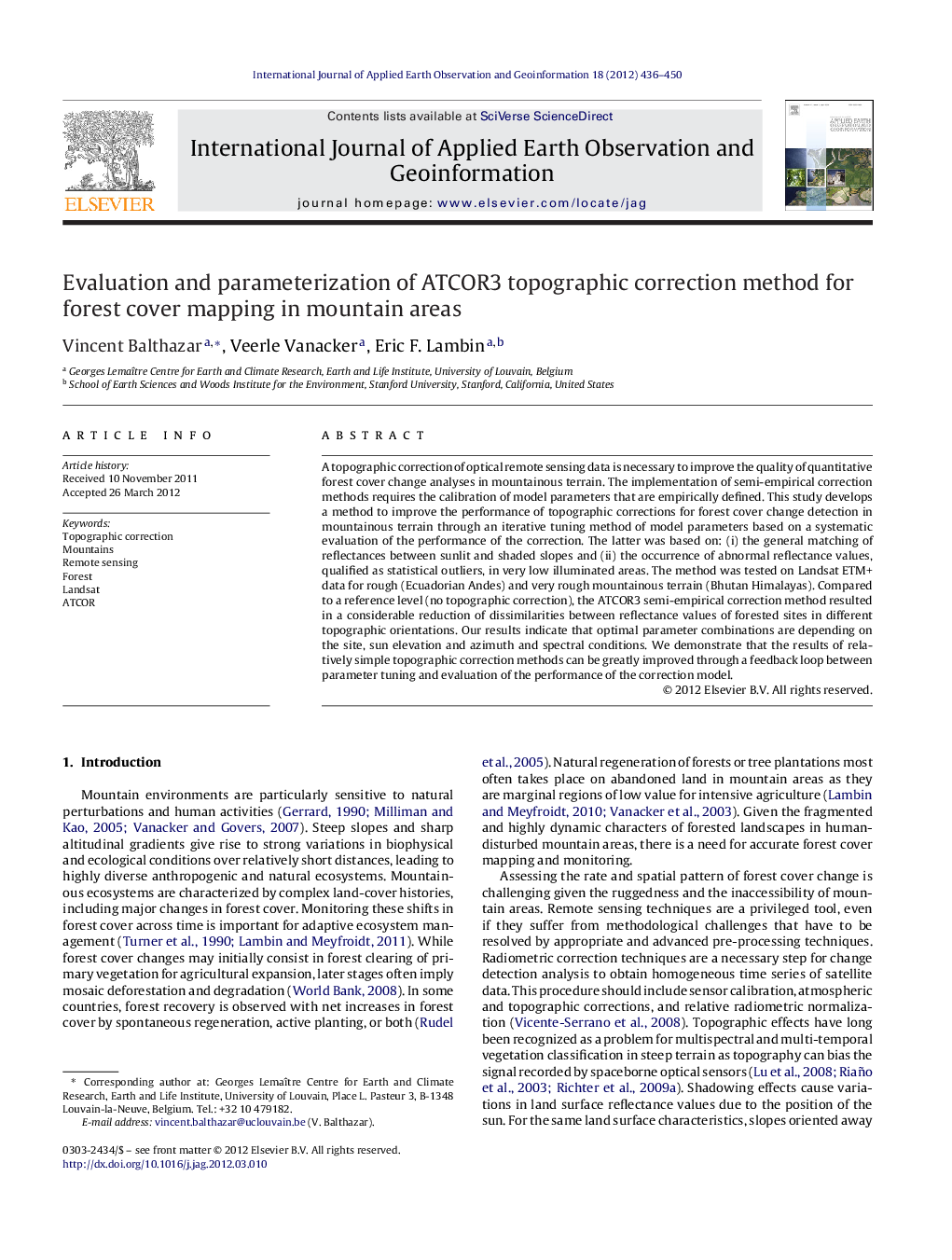| Article ID | Journal | Published Year | Pages | File Type |
|---|---|---|---|---|
| 4464946 | International Journal of Applied Earth Observation and Geoinformation | 2012 | 15 Pages |
A topographic correction of optical remote sensing data is necessary to improve the quality of quantitative forest cover change analyses in mountainous terrain. The implementation of semi-empirical correction methods requires the calibration of model parameters that are empirically defined. This study develops a method to improve the performance of topographic corrections for forest cover change detection in mountainous terrain through an iterative tuning method of model parameters based on a systematic evaluation of the performance of the correction. The latter was based on: (i) the general matching of reflectances between sunlit and shaded slopes and (ii) the occurrence of abnormal reflectance values, qualified as statistical outliers, in very low illuminated areas. The method was tested on Landsat ETM+ data for rough (Ecuadorian Andes) and very rough mountainous terrain (Bhutan Himalayas). Compared to a reference level (no topographic correction), the ATCOR3 semi-empirical correction method resulted in a considerable reduction of dissimilarities between reflectance values of forested sites in different topographic orientations. Our results indicate that optimal parameter combinations are depending on the site, sun elevation and azimuth and spectral conditions. We demonstrate that the results of relatively simple topographic correction methods can be greatly improved through a feedback loop between parameter tuning and evaluation of the performance of the correction model.
► Method improving performance of topographic corrections for forest change detection. ► Test of the method on Landsat ETM+ data for Ecuadorian Andes and Bhutan Himalayas. ► Iterative tuning method of correction model parameters based on two criteria. ► Analysis of reflectance matching between sunlit and shaded slopes. ► Consideration of abnormal reflectance values occuring in very low illuminated areas.
